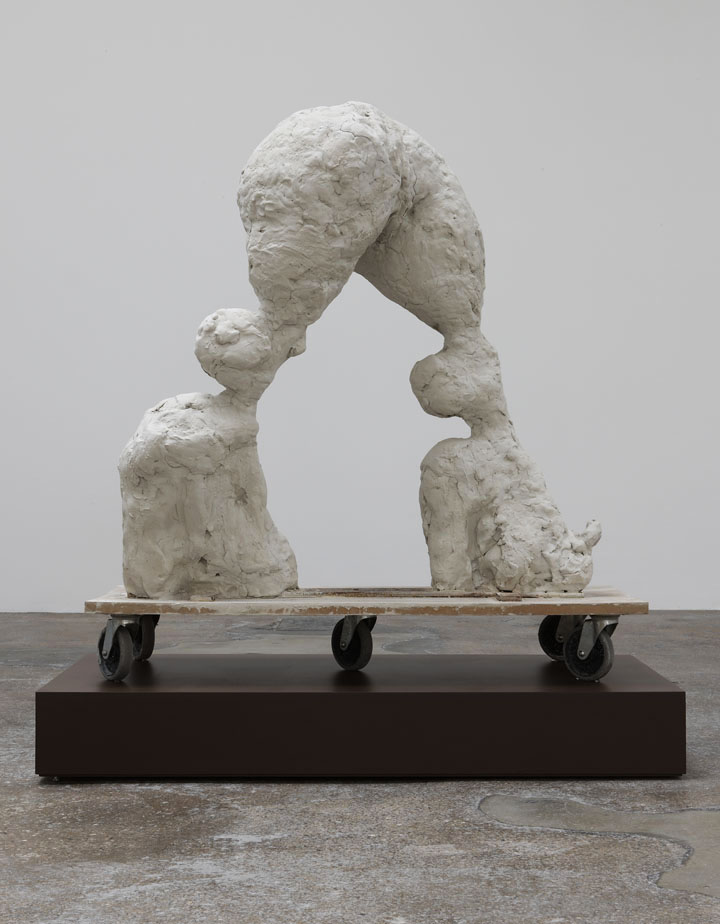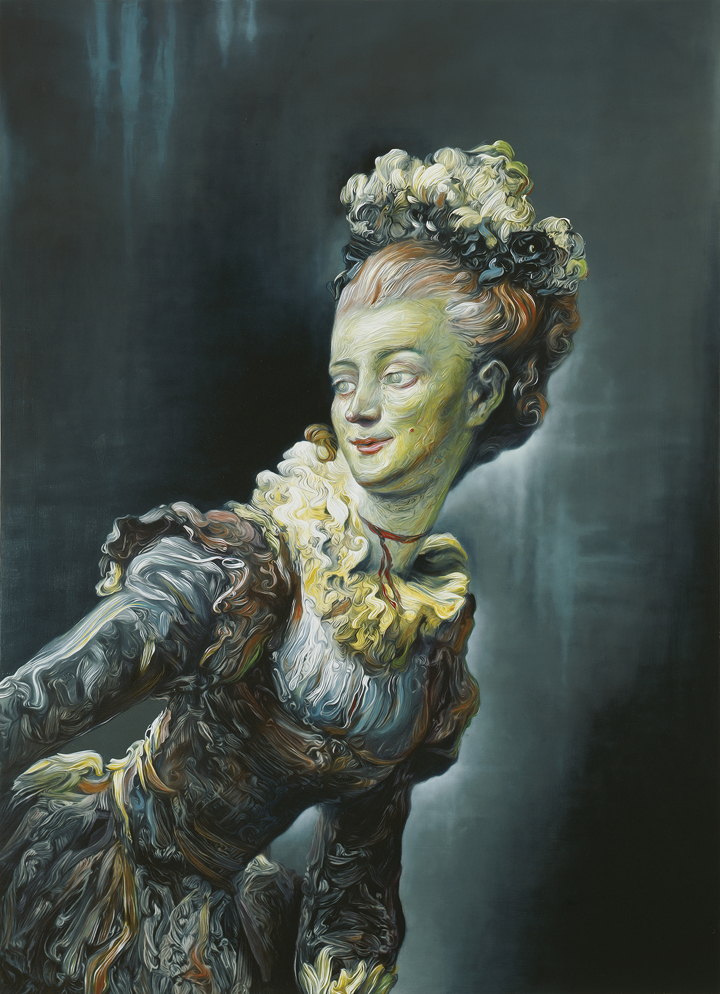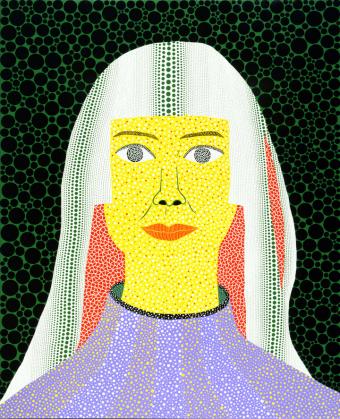PROVIDENCE, R.I. [Brown University] — The David Winton Bell Gallery presents SHE: Picturing women at the turn of the 21st century, on display in the Bell Gallery Saturday, Oct. 25, to Sunday, Dec. 21, 2014, and at the Cohen Gallery in the Perry and Marty Granoff Center for Creative Arts Saturday, Oct. 25, to Tuesday, Dec. 2, 2014. An opening reception will be held on Friday, Oct. 24, 2014, from 5:30 to 7:30 p.m. at both venues. The exhibition and receptions are free and open to the public.
Spanning a period of 24 years — from 1989 to 2013 — SHE presents a broad-ranging selection of contemporary representations of women. The exhibition, which is drawn from a private collection, includes works by 11 highly acclaimed artists working today, including Candice Breitz, Glenn Brown, George Condo, John Currin, Jeff Koons, Yayoi Kusama, Chris Ofili, Jenny Saville, Cindy Sherman, Rebecca Warren, and Lisa Yuskavage.

Reinforced clay on MDF sheet on wheels, 59.5" x 54 x 25 inches.
Private collection. © Rebecca Warren.
Image courtesy Matthew Marks Gallery
Jenny Saville’s massive and masterful paintings of corpulent women challenge conventional ideals of female beauty, while Cindy Sherman’s History Paintings expand her critique of representations of femininity into the art’s historical past as she reworks portraits by Rembrandt, David, and Fragonard.
Candice Breitz focuses on Hollywood’s portrayal of motherhood. Compiling clips from recent films in her video installation Mother, Breitz focuses on the exasperation, insecurity, self-blame, and anxiety that these filmic women express about their maternal abilities.
John Currin and Lisa Yuskavage unapologetically embrace and exaggerate images made by and for men, from advertising to pornography. While Currin admits to a chauvinistic fascination, Yuskavage attempts to take possession of this previously male venue.
Similarly, Rebecca Warren’s sculpture L channels the comic imagery of R. Crumb’s outrageously sexualized women. Working in unfired clay and bronze, Warren has developed a signature style of joyous and exuberant lumpen figures (often presented on light pink plinths) that have transformed her precedents from Crumb to Degas and Rodin.
The exhibition’s discourse on gender is compounded by issues of race in the works of Chris Ofili and Yayoi Kusama. Reversing the spelling of “a negro,” Ofili created Orgena, an icon of African beauty related to his Afro Muses series. Confronting racial and gender discrimination in 1950s New York, Yayoi Kusama embarked upon her conceptual exploration of self-obliteration. She is represented here by a lesser-known painted self-portrait from a series that dates to 1982.

Oil on panel, 52 3/8 x 37 x 1 1/8 inches.
Private collection. © Glenn Brown
Image courtesy Gagosian Gallery
Women are frequent subjects in George Condo’s work, as evidenced by his 2005 exhibition George Condo: One Hundred Women. However, Condo is not particularly interested in feminism. The same can be said of Glenn Brown. They are both, instead, deeply concerned with painting — the simple and not-so-simple application of pigment to canvas. Applying their idiosyncratic and highly identifiable styles to images of women, they parse the satirical, the humorous, and the grotesque.
For Jeff Koons, like Condo and Brown, “woman as subject” is secondary to formal concerns. His Gazing Ball (Ariadne) is a spectacular sculpture — a juxtaposition of a classical figure reproduced in gleaming white plaster and a deep blue, reflective, gazing ball. In other works from the Gazing Ball series, Koons combines his gazing balls with plaster mailboxes, birdbaths, and snowmen. For Koons, images of women and mailboxes are the same; both are fodder for his world of pop — no more, no less.
Each of these artists responds to the representation and figuration of women in their own way. The intentions and interpretations range from feminist critiques to incidental observations — from feminism as critical subject to woman as compositional subject.
The David Winton Bell Gallery is located on the first floor of List Art Center, 64 College St. The Cohen Gallery is located in the Perry and Marty Granoff Center for Creative Arts, 154 Angell St. Both galleries are open Monday through Wednesday from 11 a.m. to 4 p.m.; Thursday 1 p.m. to 9 p.m.; Friday 11 a.m. to 4 p.m.; and on Saturday and Sunday from 1 p.m. to 4 p.m. For more information, call 401-863-2932 or visit www.brown.edu/bellgallery.

